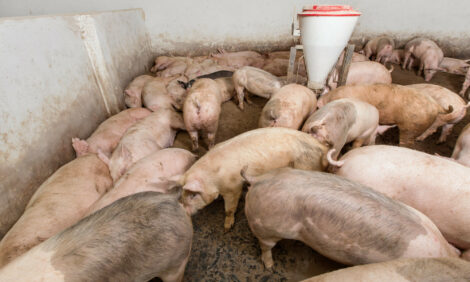



Lameness as a Welfare Concern
This paper was presented by John Deen of the College of Veterinary Medicine in the University of Minnesota at the 28th Centralia Swine Research Update. He discusses the seriousness of lameness in sow herds and how lame sows are more likely to be culled.Understanding lameness means that we need to understand what happens to the sow after a lameness event starts. Mr Deen recently followed 700 sows entering the farrowing crate. Each sow was evaluated for lameness and compared the subsequent performance for the year.
They found that sows were culled at a higher rate if they were lame. This is often recorded in the records as the proportion of sows that are culled due to lameness. They also found that sows were not culled due to lameness but instead were culled due to reproductive problems. They found that a proportion of sows had lameness as the root of their reproductive problems.
They found that the reproductive inefficiencies were the major problem associated with lameness. It is the lame sows that are retained and fill a sow's space with an under-producing animal that is the major economic concern.
Table 1 exhibits the estimates of economic losses associated with a single diagnosis of lameness in a sow entering the farrowing crate.
| Table 1: Estimates of losses due to a diagnosis of lameness in a sow space | |
| Diagnosis of Lameness | Cost |
|---|---|
| Decreased Salvage Value | $4.28 |
| Increased Replacement Costs | $48.60 |
| Decreased Output | $159.96 |
| Decreased Value of Output | $18.15 |
| TOTAL | $230.84 |
The relationship between lameness and productivity has a limited description and often it is assumed that the only management requirement is to eliminate these sows from the herd.
Lameness in the sow herd can be serious:
- Lameness at entry into the farrowing crate can be up to 20 per cent
- Lameness can have a large negative effect on the sow, although there are few estimates available on the effect on productivity
- Lameness is sometimes not easily diagnosed in sow herds
- Claw lesions are very common in sows but have not been studied in association with lameness in sows.
| Effects of lameness: | |||
| Not Lame | Lame | P Value | |
|---|---|---|---|
| Pigs born/day | 0.049 | 0.028 | <0.00005 |
| Survival at 350 days, % | 51 | 33 | <0.00005 |
| Total days in herd | 215 | 147 | <0.00005 |
Mr Deen concluded that the main reason for ignoring lameness in sows is that it has not been measured and studied and therefore, there are few options for controlling or dealing with lameness in sows. Research should look for ways to benefit the sow as improvements in sow welfare will also benefit the bottom line.
This paper was summarised by Penny Lawlis, Humane Standards Officer of OMAFRA
Further Reading
| - | You can view other papers presented at the Centralia Swine Research Update 2009 by clicking here. |
May 2009








